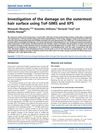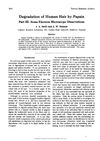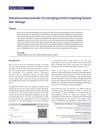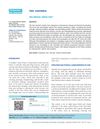TLDR 18-MEA and cationic surfactants can restore and maintain hair's hydrophobic nature, improving its beauty and feel.
The study highlighted the critical role of 18-methyleicosanoic acid (18-MEA) in maintaining hair's hydrophobicity and reducing friction, which are essential for hair's sensory properties. It involved hair samples from 97 female volunteers of different ethnicities. The removal of 18-MEA, often due to chemical treatments, led to increased hydrophilicity and friction, negatively impacting hair. However, regenerating the hydrophobic layer using 18-MEA could restore these properties. The study emphasized the importance of 18-MEA in hair care formulations and its role in protecting hair from chemical and environmental damage.
 25 citations
,
December 2011 in “Surface and interface analysis”
25 citations
,
December 2011 in “Surface and interface analysis” Bleaching hair causes significant damage by breaking down proteins and fatty acids.
18 citations
,
April 2010 in “Langmuir” Human hair surface varies in wettability, showing daily and monthly patterns.
 75 citations
,
November 1965 in “Textile research journal”
75 citations
,
November 1965 in “Textile research journal” Papain and bisulfite break down human hair by dissolving parts of it.
 19 citations
,
March 1961 in “Nature”
19 citations
,
March 1961 in “Nature” A fatty acid/protein complex in human hair helps protect it from damage.
 April 2024 in “Research Square (Research Square)”
April 2024 in “Research Square (Research Square)” 16-MHA can restore the barrier and moisture of damaged hair, making it similar to undamaged hair.
2 citations
,
July 2023 in “Cosmetics” Surfactants in shampoos and conditioners remove some but not all lipids from hair, and more research is needed to understand their full impact.

Understanding hair surface properties is key for effective hair care products.
 1 citations
,
January 2013 in “Chronicles of young scientists”
1 citations
,
January 2013 in “Chronicles of young scientists” Immuno-cosmeceuticals from chicken egg yolk can effectively repair and improve damaged hair.
 43 citations
,
January 2013 in “Indian Journal of Dermatology, Venereology and Leprology”
43 citations
,
January 2013 in “Indian Journal of Dermatology, Venereology and Leprology” The article concludes that advancements in hair cosmetics require dermatologists to stay informed about products and their potential risks, including allergies and higher risks for hairdressers.








